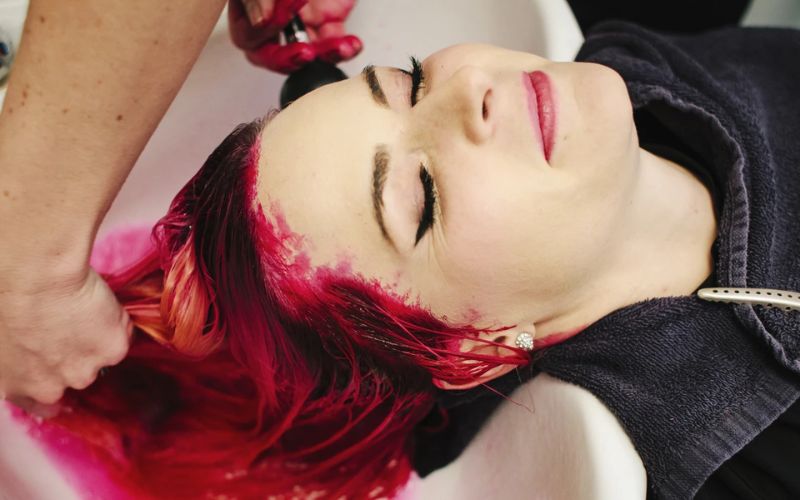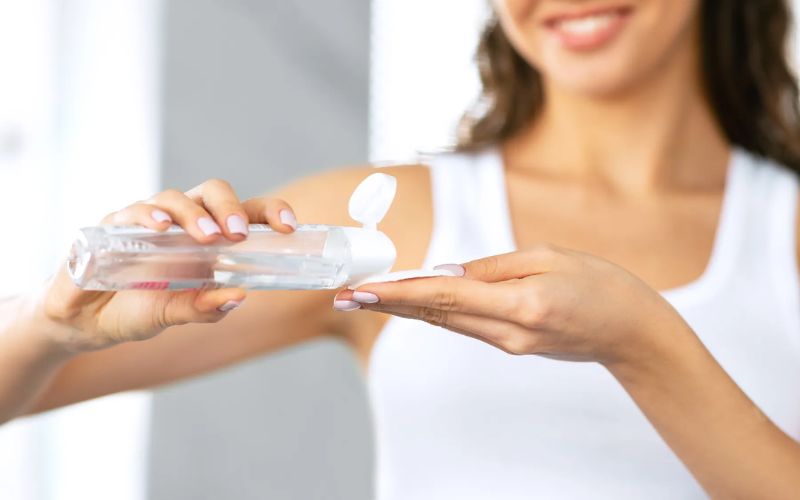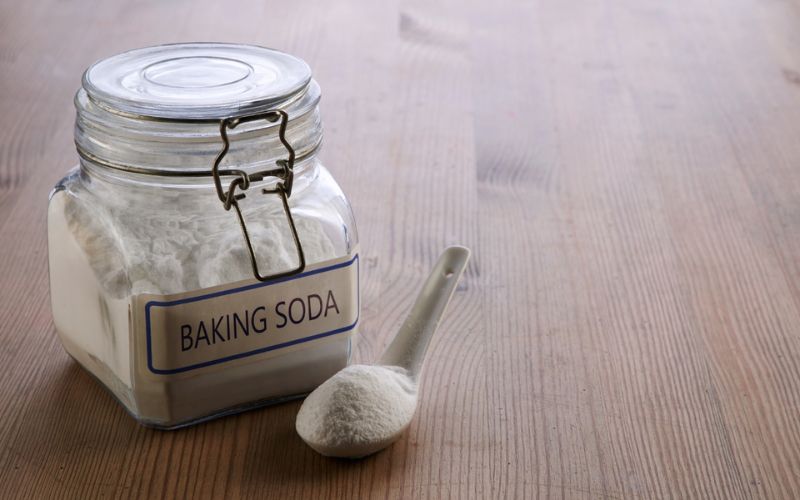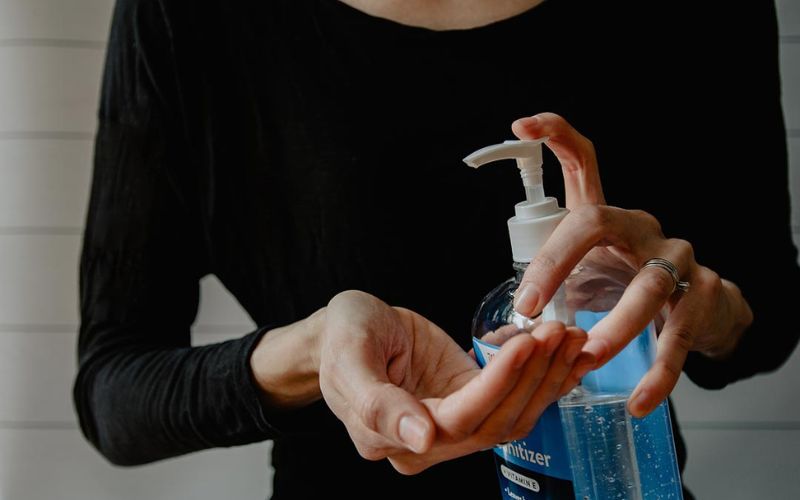Blog
How to Get Hair Dye Off Skin: 5 Safe & Easy Tricks for Home
Dyeing your hair is a fun way to switch up your look – until the color ends up on your skin. But don’t worry, those stains aren’t permanent. With a few simple tricks, you can remove them quickly and safely at home. Let’s explore 5 easy ways to get hair dye off your skin – brought to you by Raw Hair.
Why Hair Dye Stains Skin?
The reason hair dye sticks to your skin is surprisingly simple – your skin and hair are made of the same thing: keratin.
Hair dye is chemically designed to penetrate the hair shaft and bond with keratin inside each strand. That’s how it deposits color and makes it last.
But here’s the catch: your epidermis – the top layer of your skin – is also made of keratin. And the dye can’t tell the difference. It just sees keratin and does what it’s meant to do: grab onto it and stain.
So when hair dye touches your forehead, ears, or neck, it doesn’t distinguish between hair and skin. To the dye, it’s all just keratin – another surface to color.
How to Get Hair Dye Off Your Skin at Home
Finished dyeing your hair only to find stubborn color stains on your skin? Don’t worry. You can easily lift those marks from your face, hands, and neck using simple products you likely already own.
Makeup Remover or Micellar Water
This should be your go-to method – especially for the sensitive skin on your face and along your hairline. Oil-based makeup removers and micellar waters are designed to dissolve pigments and oils gently, making them ideal for removing hair dye stains without causing irritation.
How to Do It:
- Soak a cotton pad: Saturate a cotton pad with your favorite oil-based makeup remover or micellar water.
- Press and dab: Hold the pad against the stained area for a few seconds to loosen the dye. Then, gently dab or wipe in small, circular motions. Avoid rubbing too hard – that can irritate or redden the skin.
- Rinse and repeat if needed: Wash the area with lukewarm water. If a light stain remains, repeat the process once more.
Pro Tip: This method works best on fresh dye stains. The sooner you treat the area after coloring your hair, the easier the pigment will lift.
Baby Oil or Olive Oil
If you’re dealing with sensitive or dry skin, natural oils like baby oil or olive oil are a gentle yet effective option. These oils help break down dye pigments while moisturizing the skin – perfect for areas like the neck, ears, or hairline.
How to Do It:
- Apply the oil: Pour a small amount of baby oil or olive oil onto a cotton pad or your fingertip.
- Massage gently: Rub the oil over the stained area in slow, circular motions. Let it sit for 5-10 minutes to loosen the pigment.
- Wipe and rinse: Use a warm, damp cloth to wipe off the oil. If the stain is still visible, repeat the process or leave the oil on overnight with a soft towel over your pillow.
Pro Tip: Baby oil is great for removing dye near your ears or neckline – where skin tends to be thinner and more sensitive.
Baking Soda and Facial Cleanser
Need a little extra scrubbing power? A mix of baking soda and your regular facial cleanser creates a mild exfoliant that can help lift stubborn dye stains without being too harsh.
How to Do It:
- Make a paste: Mix equal parts baking soda and facial cleanser (around ½ tsp each) in your palm or a small bowl.
- Apply gently: Massage the mixture onto the stained area using soft, circular motions.
- Rinse clean: Wash the area with lukewarm water and moisturize afterward.
Note: Avoid this method on irritated, broken, or very sensitive skin, as baking soda can be mildly abrasive.
Non-Gel Toothpaste
Toothpaste isn’t just for your teeth – white, non-gel toothpaste can also help scrub away hair dye, thanks to its mild abrasive ingredients.
How to Do It:
- Apply a small amount: Dab a bit of non-gel toothpaste directly onto the stain.
- Rub gently: Use your finger or a soft cloth to rub the area in circles for about 1–2 minutes.
- Rinse off: Wash with warm water and pat dry.
Pro Tip: This works best on hands or the hairline. Make sure to use basic white toothpaste – gel or whitening formulas may irritate the skin.
Rubbing Alcohol or Hand Sanitizer
When nothing else works, rubbing alcohol or alcohol-based hand sanitizer can help lift tough stains – especially on thicker skin like your hands or ears. Use with caution, though, as alcohol can dry out your skin.
How to Do It:
- Dab the alcohol: Apply a small amount of rubbing alcohol or hand sanitizer to a cotton pad.
- Gently wipe: Lightly wipe the stained area without scrubbing too hard.
- Rinse and moisturize: Rinse the skin with water and apply a moisturizer right after to prevent dryness.
Warning: Not recommended for delicate facial skin – especially around the eyes or hairline.
Things to Keep in Mind When Removing Hair Dye from Skin
Before you start scrubbing away at a hair dye stain, it’s important to keep a few things in mind to protect your skin and get the best results:
- Be gentle with your skin: Avoid harsh scrubbing or over-exfoliating. Your skin, especially around the face and hairline, can easily become red, irritated, or dry if rubbed too hard.
- Do a patch test first: If you’re using vinegar, baking soda, or alcohol-based methods, try a small amount on a less sensitive area first to check for any reaction – especially if you have sensitive or allergy-prone skin.
- Avoid the eyes and lips: Many cleaning agents, even gentle ones, can irritate sensitive areas. Be especially careful not to let products drip into your eyes when working around the forehead.
- Moisturize afterward: Some methods can dry out your skin, particularly those that involve alcohol or exfoliants. After cleaning, apply a moisturizer to restore hydration and prevent flakiness.
- Act quickly: The sooner you treat the dye stain, the easier it is to remove. Fresh stains respond better to mild methods like micellar water or baby oil, while older stains may need stronger solutions.
- Don’t overdo it: If a faint stain remains after one or two gentle attempts, it may fade on its own in a day or two. It’s better to let it fade naturally than to risk damaging your skin.
Hair dye stains may be part of the coloring process, but they don’t have to ruin the experience. With the right tricks, you can keep your skin clean and your hair vibrant – every time.
But let’s be honest: frequent dyeing can leave your hair dry, damaged, and tired. If you love changing up your look often, why not do it the healthier way?










